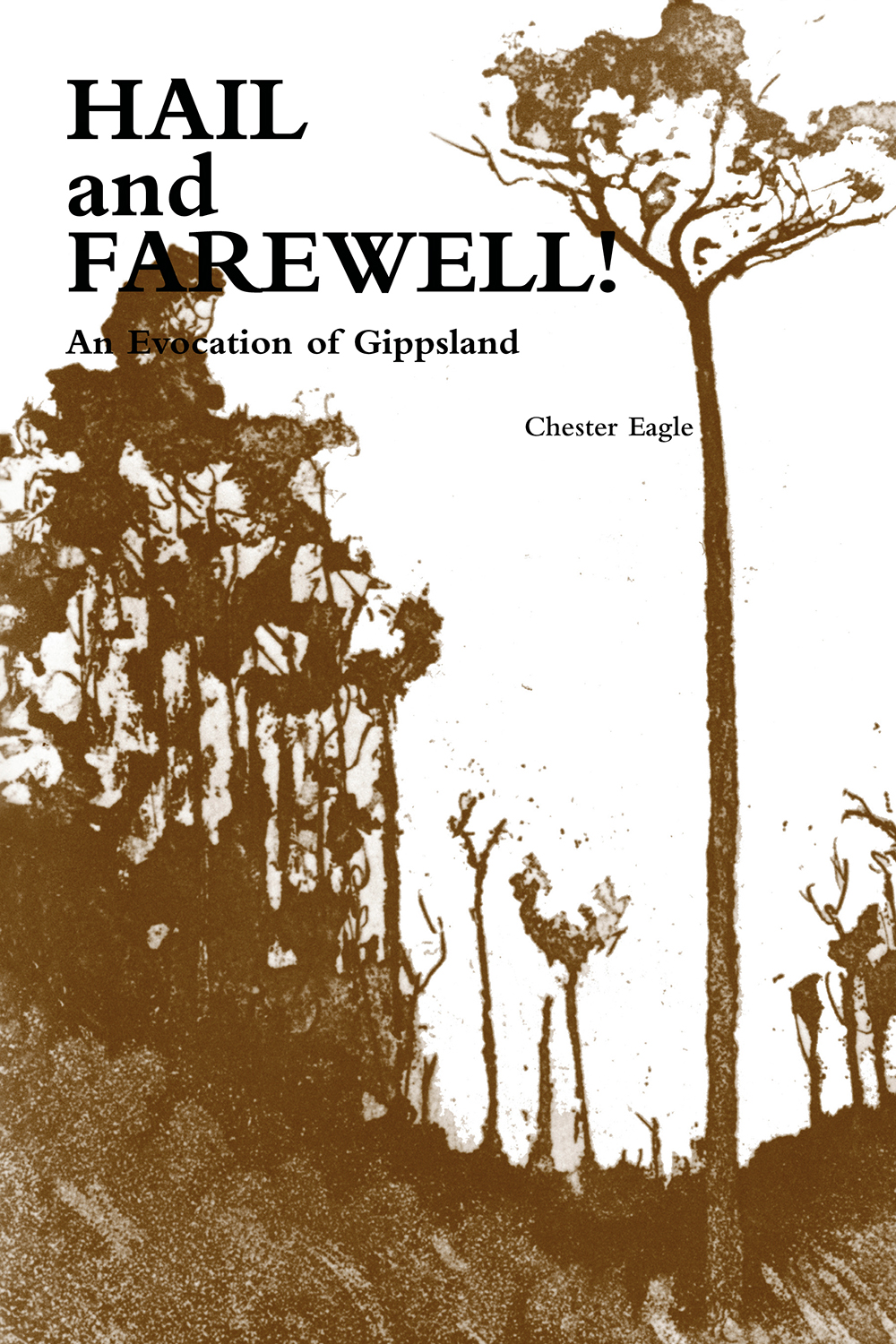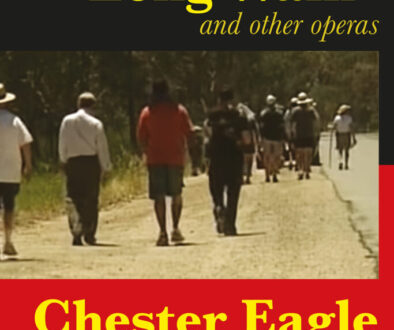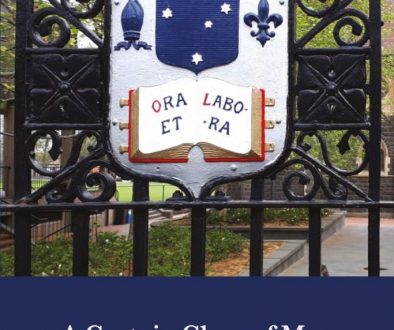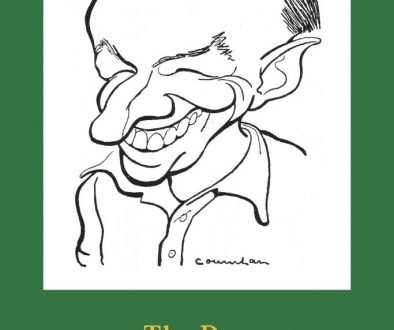Hail and Farewell! An Evocation of Gippsland

Gippsland is an area unique in Australia; backed by mountains, bounded by the sea, cut off from the main Sydney-Melbourne axis of Australian history, it lacks those starker elements of the Australian mainland which have captivated our artists and visitors. Yet, in many ways, Gippsland still embodies the nineteenth century Australia celebrated by those who search our past and present for a national ethos. It seems to have a rare capacity to absorb change without altering its basic nature.
In 1956, Chester Eagle was sent to Gippsland, to Bairnsdale – a town of whose existence he was only dimly aware – as a Victorian Education Department appointee to the local technical school. On arrival, following initial dislike, he felt challenged, stayed twelve years, and ‘fell in love with the place’.
In Hail and Farewell! An Evocation of Gippsland he has brought to life Gippsland and its people. History, main street gossip, bar talk and daily incident are combined with affectionate portrayals of local identities and reverential descriptions of the divine landscape. The place and its people live and breathe in its pages – the lean-to scoreboards, stump carvings, salmon trawlers and towering trees; the post-pioneering villages and their inhabitants – earthy, insular, and all acutely aware of each other. All are set down by an author who is deeply committed to his subject, yet has the necessary detachment to see it clearly and portray it with a sympathetic but wholly objective eye.
Written by Chester Eagle
Edited by Bridget Everett
Designed by Derrick Stone and John Sayers
Cover art by David Armfield
First published in 1971 by William Heinemann
Number of copies unknown
Circa 104,000 words
Electronic publication by Trojan Press (2006)
The writing of this book:
I was given a teaching appointment in Bairnsdale, and I thought it a dreary place. No cultural life, no nothing, much. I had a terrible time in my first year at the Technical School and I determined that I wouldn’t leave until I could do so on my terms. I wasn’t going to be driven out. I got myself a Volkswagen and started to explore the mountains. By the end of the second year I was in love with Gippsland, its atmosphere, its stories. I invited city friends down to explore its places with me. Gippsland was so different from the inland plains where I’d come from. After a time my love of the landscape centred itself on two peaks – Castle Hill and Mount Baldhead. The first became a locus for my mysticism, and the second for the slowly developing view of life as something that could be seen with a whole or unified vision if only you could get yourself in the right place. (This probably means seeing it with the right habit of mind.) I had a feeling that I would write about Mount Baldhead one day, but I also knew I wasn’t ready yet. What I had in mind to do required a maturity I didn’t possess.
Eventually I married, my wife wanted to see new places, and I was ready too. I knew that I was bringing a unique experience to an end, and I started to write about it, before I left and then in the following year, in Melbourne. In my Gippsland years I had been heavily influenced by Hal Porter, Bairnsdale librarian for some of my time, though I knew that I could never write in the way that was natural for him. What would my writing be like? I started with a section on ‘The lonely men of Gippsland’, because there were plenty of them scattered around, reminders of the pioneering days, perhaps. (Hal always used to call Bairnsdale a frontier town, and I had only to look at the Main Street buildings from one street back to see what he meant.) I saw that ‘The lonely men’ gave one aspect of Gippsland an importance that was too great for it, so I scrapped that section. Then I wrote about my very mixed encounters with ‘The Men from Snowy River’. This came easily because it was vivid in recall and because I was having my first experience of what I shall call writing to a shape. It seemed to me that the experiences I was describing had given me my first great opening up to a manhood that was mine as opposed to one conferred on me by my family. So far so good, but the same experiences led me to contemplate the limitations and the terrible end of my friend Lochie (Sandy McDonnell). So the writing had to narrow down to its inevitable end, and it did.
What to do about the major part of the book, the evocation? I began by writing a series of sketches of three or four pages (on foolscap, if anybody remembers those long sheets!), but I grew dissatisfied. I was examining the bits and missing the whole. I fretted for some weeks, then I started again, and wrote the ‘Landscape and People’ section that forms the greater part of the book today. I had to learn to let the book meander in its own way, trusting that it knew what it was doing. This may sound silly to those who are not used to writing at length, but for me it is essential to be humble in the presence of writing’s processes. I am sceptical about the existence of writer’s block. I think books use us to get themselves written, that writers should do everything they can to equip themselves with command of the skills, vocabulary and – essential! – forms they may require, and then they should put themselves, humbly, at the service of whatever needs to be said. As an egotistical and forceful young man, I didn’t find this an easy lesson to learn.
The book was published by William Heinemann after long deliberation. People’s reactions to it were strangely mixed and the months surrounding publication were an often painful experience. Let me say a little more.
Reviewers were a mixed bunch. Hal Porter, whom I’d revered, ignored the book. Alan Marshall, who’d been a friend of Hal, praised it in the first ever published review of my work. Some reviewers refused to accept what I had to say. Others saw it in ways that I hadn’t imagined were available. And so on. A bigger shock came earlier, when I sent a copy of sections of the book to the two Gippsland families that I felt – knowing the power of gossip in small communities – had the right to know what was on the way. The Merlo family, whose reaction I feared, were delighted. Lochie’s family, whom I expected to respond favorably to my portrait of him, were outraged, and wrote to the publisher, complaining. The publishers brought in their lawyer, and he, the editor and I had sessions working through his queries. Minor clarifications were made here and there, and I was forced to take out one allegation about the disappearance of a man whose story I thought central to the book. I could only accept this because I felt sure that I would return to his story at some later time.
So my first book was in the world. People looked at me differently. Everyone, I discovered, lives inside some construct of their lives and they dislike, or fear, those who may alter their concept in a way that makes them uncomfortable. A writer says that the world is so, and people don’t like anybody to have this power unless the verdict, the judgements they hear, are ones that suit them. Writers have sharp eyes and clear voices so they need to be intimidated, bought off, or kept out of the way. Sidelined. People who hadn’t read my book told me what I should and should not have written. The whole experience made me wary, and it hardened me. I saw that I wouldn’t be able to keep writing unless I developed a tough skin. I did.
Through this painful experience I was strongly supported by my wife and though we are no longer together I am very grateful to her for shielding me in that difficult time. Thank you Mary. I was also lucky in my publisher, Dennis Wren, whose reaction to the complaints emanating from Gippsland was the simple and traditional, ‘Publish and be damned!’ Thank you Dennis.



